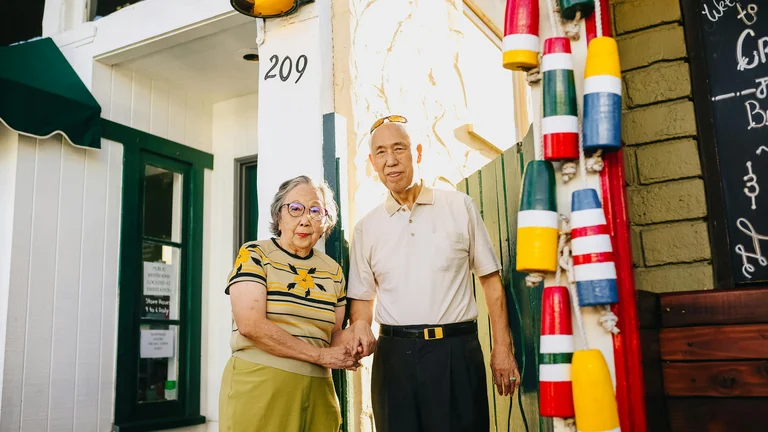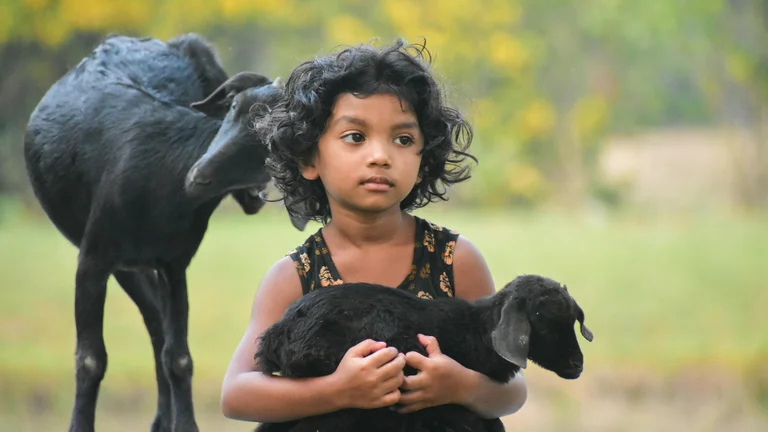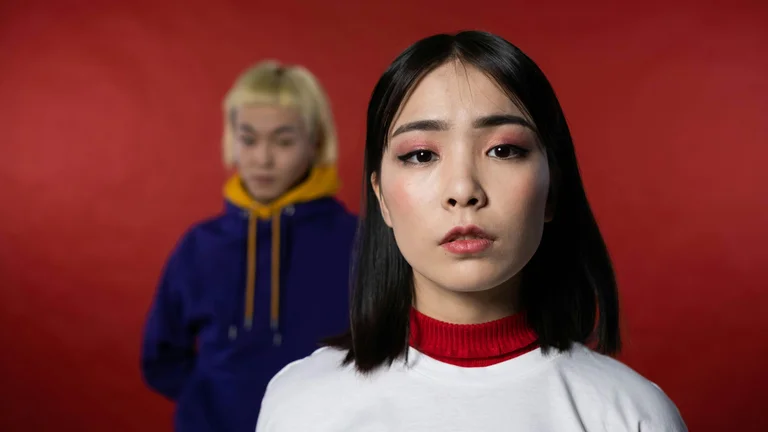
In the expansive world of Korean dramas (K-Dramas), characters that often shine with warmth, humor, and emotional depth are the grandmothers and grandfathers. These elderly figures, though sometimes relegated to background roles, stand out as some of the most memorable and lovable characters in storytelling due to their wisdom, unconditional love, and unique personalities. Whether acting as guiding figures, comic relief, or the emotional anchors of their families, K-Drama grandmas and grandpas offer a glimpse into traditional and contemporary Korean values, family dynamics, and heartfelt relationships. This comprehensive article delves deep into the most lovable K-Drama grandmas and grandpas, exploring their character traits, examples from top dramas, and the cultural significance behind their portrayals. We will also provide practical insights on how these characters impact viewers and the broader storytelling landscape.
Understanding the Role of Grandparents in K-Dramas
In Korean culture, grandparents traditionally hold a revered position within the family structure. They are often seen as custodians of heritage and wisdom. K-Dramas embody this cultural reverence, foregrounding grandparent characters as figures who nurture, advise, and sometimes challenge their children and grandchildren in ways that shape the plot. Their presence is both stabilizing and dynamic, offering a connection to familial traditions and unspoken emotional undercurrents. Grandparents in K-Dramas are rarely one-dimensional; they possess intricate backgrounds, diverse motivations, and relatable flaws. This complexity makes them endearing to audiences worldwide who recognize the authentic depiction of family bonds.
Notably, the depiction of grandmas and grandpas reflects a balance of tenderness combined with occasional sternness, symbolizing the tough love they often exercise. Their interactions with younger characters blend respect for tradition and adaptation to modern challenges, mirroring Korea's rapid social changes. These dramatic roles offer a fascinating lens into how aging, familial responsibility, and social expectations converge within storytelling frameworks.
Iconic Grandmas and Their Defining Traits
Among K-Dramas, certain grandmothers have become darling figures not just for their compassion but for their quirks and spirited natures. Many grandmas portray a nurturing role, cooking traditional Korean dishes, offering life advice with witty pragmatism, or fiercely defending their families. Their wisdom, drawn from years of life experience, provides moral support during crises. Some express their love through actions rather than words, silently supporting protagonists, showcasing intergenerational communication nuances.
An important aspect is the comedic relief several grandmas provide. Their stubbornness, strong personalities, or old-school attitudes injected with a dash of humor make scenes memorable. This creates a warm ambiance, balancing emotional intensity. Below is a table summarizing notable grandma archetypes and examples in popular K-Dramas:
| Grandma Archetype | Characteristic Traits | K-Drama Examples | Notable Moments |
|---|---|---|---|
| Strict but Loving | Disciplinarian with deep affection; demands respect practices traditional values | "Reply 1988" (Sung Bo-ra’s Grandma – Kim Sung-ryung) "18 Again" (Lee Soon-ja – Kim Hye-ok) | Enforcing family rules firmly while secretly supporting grandchildren’s dreams |
| Wise Guide | Embedded with life wisdom, offers moral and emotional guidance has a calming presence | "My Mister" (Lee Ji-an’s Grandmother – Kim Young-ok) "Goblin" (Ji Eun-tak’s Grandmother – Lee Il-hwa) | Providing advice that subtly steers characters through conflicts |
| Feisty and Comedic | Outspoken personality, humor embedded in traditional settings lively and unpredictable | "Weightlifting Fairy Kim Bok-joo" (Jung Bok-joo’s Grandma – Kim Young-ok) "Start-Up" (Nam Do-san’s Grandma – Jung Young-sook) | Creating light moments, breaking tension with wit and candidness |
| Silent Supporter | Quietly strong and protective expresses love through actions rather than words | "Crash Landing on You" (Yoon Se-ri’s Grandmother – Kim Young-ok) "Hospital Playlist" (Chae Song-hwa’s Grandma – Kim Mi-kyoung) | Moments highlighting quiet sacrifices and behind-the-scenes care |
Each archetype contributes differently to the drama's emotional range, and the actresses portraying these roles are often lauded for their nuanced performances that bring authenticity.
Adored Grandfather Figures and Their Impact
Grandparents in K-Dramas often serve as emotional anchors, but grandfathers tend to bring a slightly different flavor to the family dynamics. Grandpas may embody authority balanced with warmth, offering guidance shaped by their generational perspective. Many portray protective attitudes but occasionally reveal vulnerabilities, enhancing their relatability.
One widely appreciated aspect of grandfathers in K-Dramas is their role as messengers of history within the family. They tell stories of hardships faced in their youth, endurance during turbulent times, or the ways they built the foundation for their descendants' thriving futures. These narratives subtly educate audiences about Korea's social evolution while enriching the drama’s context.
Additionally, grandpas in K-Dramas sometimes act as comic figures but without losing dignity or depth. Their interactions with younger characters, especially grandchildren, often include moments of bonding over hobbies, shared meals, or traditional customs. Below is a concise list of traits commonly embodied by memorable K-Drama grandfathers with corresponding drama examples:
- Authoritative Mentor: Exudes wisdom and commands respect, yet shows a paternal warmth — seen in "The World of the Married" (Lee Tae-oh's Grandfather) and "My Mister".
- Gentle Storyteller: Connects generations through stories and memories, exemplified by "When the Camellia Blooms" (Hong-chul’s Grandpa).
- Playful Companion: Breaks the stereotype of elderly inactivity, engaging in playful and humorous moments with grandchildren — as in "Weightlifting Fairy Kim Bok-joo".
- Silent Protector: Acts quietly to support family, often sacrificing personal comfort — noticeable in "Stove League" (grandfather figure in team background).
Such characters enrich the substance of K-Dramas, offering a deeper emotional layer that extends beyond central romantic or dramatic arcs.
Deep Character Studies: Examples of Most Lovable Grandparents in Popular K-Dramas
The emotional resonance of grandparent roles is best understood through detailed analysis of specific characters from iconic K-Dramas. Examining a few can provide insight into how powerful and multifaceted these roles are.
1. Kim Sung-ryung as Sung Bo-ra’s Grandma in Reply 1988
This grandmother stands as a pillar of strength and traditional values in a series heavily focused on family and neighborhood unity. Her dual nature — strict disciplinarian at times, yet gentle and supportive beneath the surface — reflects many real-life grandparents in Korea. The show portrays her as deeply protective of her family’s reputation but also fiercely loving, especially towards her grandchildren, often sacrificing her comfort for their well-being. The layered depiction emphasizes the intertwining of old and new cultural expectations.
The scenes involving her cooking kimchi, setting rules for curfews, and mediating family disputes capture everyday nuances in generational interactions. She is also a source of wisdom, reminding younger characters of life’s bigger picture amid chaos. This character helped popularize the archetype of the 'strict but loving grandma' with nuance rather than caricature.
2. Kim Young-ok as Various Grandmother Roles
Often called the “Nation’s Grandma” in South Korea due to her prolific career, Kim Young-ok has portrayed countless grandmothers across K-Dramas and films. Her ability to blend warmth, patience, and humor in portrayals has endeared her to fans globally. Roles in dramas such as My Mister, Goblin, and Crash Landing on You showcase her versatility, from offering sage advice to quiet moments of sacrifice.
Her characters often embody the silent strength archetype — expressing love through actions more than words. This form of expression resonates with audiences who understand the subtleties common in intergenerational Asian family relationships. Her performances often add subtle emotional depth without requiring heavy exposition.
3. Lee Soon-ja’s Grandma in 18 Again (Kim Hye-ok)
In the drama 18 Again, the grandmother figure brings both humor and grounding kindness to a storyline revolving around identity and second chances. Her interactions provide comic relief without undermining seriousness. She embodies pride for her family while being relatable in her old-fashioned remarks and concern for well-being.
This grandma illustrates the balance between respect for elders and acknowledging evolving values within families. She often serves as the emotional compass, reminding younger characters — and viewers — of deep-rooted familial bonds despite life’s unpredictability.
4. Grandpa Figures: Actor Lee Soon-jae’s Legacy
Lee Soon-jae has been an iconic grandfather figure in many K-Dramas, known for his calm dignity, warmth, and authenticity. His roles span decades and provide a model for how grandpa characters can serve as emotional lodestars. For instance, his role in Reply 1988 as Kim Sung-kyun’s grandfather exhibits affectionate sternness, humor, and genuine care.
Grandfather characters portrayed by Lee Soon-jae often highlight the importance of listening, patience, and quiet endurance, contributing to a richer view of elderly roles in television. His performances reveal the evolving yet enduring place of grandparents in Korean storytelling.
Table: Comparative Characteristics of Notable K-Drama Grandparents
| Actor/Character | K-Drama | Role Traits | Impact on Story |
|---|---|---|---|
| Kim Sung-ryung (Sung Bo-ra’s Grandma) | Reply 1988 | Strict love, traditional, protective | Anchors family dynamics, cultural values |
| Kim Young-ok (Multiple Roles) | My Mister, Goblin, Crash Landing on You | Wise, silent supporter, humorous | Offers life advice, adds emotional depth |
| Kim Hye-ok (Lee Soon-ja’s Grandma) | 18 Again | Comic relief, grounding, caring | Balances humor with family affection |
| Lee Soon-jae (Grandfather Roles) | Reply 1988, Others | Dignified, warm, wise | Emotional anchor and mentor figure |
How Lovable Grandparents Enhance Viewer Connection
The inclusion of well-rounded grandparents in K-Dramas enriches the viewing experience on multiple levels. Primarily, these characters introduce themes of continuity, rootedness, and unconditional support, which resonate across cultures. They remind audiences of familial roles beyond the central youthful leads, expanding the narrative canvas.
Moreover, grandparents offer multi-dimensional emotional touchpoints — providing humor, conflict, warmth, or lessons. Their occasional stubbornness or outdated perspectives create narrative tension that pushes characters toward growth. This interplay underlines the importance of intergenerational understanding within families.
Practically, well-written grandparent roles serve as bridges for viewers of different age groups, increasing relatability and appeal. Older viewers see reflections of themselves or their experiences, while younger audiences gain insight into elder perspectives and family legacies. This dynamic contributes to higher engagement and emotional investment.
Benefits of Integrating Strong Grandparent Characters in K-Dramas
- Depth in Storytelling: Provide backstory and context linked to family history and social change.
- Emotional Complexity: Enrich the spectrum of emotions with gentle humor, love, conflict, and sacrifice.
- Cultural Transmission: Model traditional values and cultural practices in a relatable way.
- Audience Engagement: Appeal to a broader demographic, enhancing empathy and connection.
By investing in these characters, writers and directors craft more layered dramas that avoid simplistic portrayals of family. The narrative becomes a tapestry where elders play an indispensable role.
Practical Guide: Writing Memorable Grandparent Characters in K-Dramas
Creating effective grandmother and grandfather roles involves nuanced character development. Here are key considerations and steps for writers seeking to emulate the success seen in beloved K-Dramas:
- Define Core Personality Traits: Choose a distinctive set of characteristics — from stern to playful — to add uniqueness.
- Develop Backstory: Craft histories that influence their worldview and interactions.
- Integrate Cultural Elements: Reflect traditional Korean customs and societal roles.
- Balance Strengths and Weaknesses: Avoid idealization by including flaws and vulnerabilities.
- Showcase Relationships: Focus on dynamic interplay with children and grandchildren.
- Use Symbolic Actions: Employ meaningful gestures or rituals that reveal affection.
- Include Moments of Humor: Leverage natural wit or stubbornness for levity.
- Portray Growth: Allow characters to adapt or reflect upon changing family dynamics.
These steps help in creating characters that resonate emotionally, with authenticity and appeal.
Exploring Real-World Influence and Fan Engagement
Many K-Drama grandparent characters have transcended fiction and influenced cultural conversations. Social media platforms see frequent discussions celebrating the heartfelt portrayals, inspiring fans to share personal anecdotes related to their own grandparents. These characters prompt reflection on generational bonds and respect for elders.
Fan communities often collect memorable quotes, scenes, and images featuring these grandparent roles, reinforcing their status as icons beyond the drama. Online forums analyze their significance in Korean social context and their universal emotional appeal. This dialogue enriches the fandom experience and spreads awareness of family values.
Furthermore, these characters have sparked renewed interest in traditional Korean heritage, from culinary practices to customs, encouraging younger generations to appreciate their roots amidst modernization. This blending of popular culture with cultural education highlights the positive real-world impact of K-Drama grandparents.
Case Study: Impact of "Reply 1988" Grandparents on Audience Perception
"Reply 1988" is a landmark series renowned for its authentic portrayal of family and community life in late 1980s Korea. The grandparents in this drama became emblematic of warmth, humor, and multigenerational harmony. Viewers globally praised how the series depicted their imperfections alongside love, creating relatable and compelling characters.
Surveys and viewer reviews indicate that many attributed their emotional attachment to the drama partly to these roles. The grandparents’ interactions highlighted everyday challenges and joys, reflecting real family dynamics rather than exaggerated drama. This contributed to broad appeal and longevity in popularity.
The series also revitalized interest in Korean 1980s nostalgia, prompting discourse on generational shifts and societal changes. By portraying grandparents as complex individuals, the show fostered empathy and understanding across age groups.
Statistics on Elderly Representation in K-Dramas
While empirical data specific to grandparents in K-Dramas is limited, academic studies on television representation in Korea offer insight:
- Approximately 20-25% of recurring family roles in major K-Dramas include elderly characters (aged 60+).
- Of these elderly roles, over 60% are depicted as grandparents, emphasizing their familial importance.
- Viewer engagement metrics suggest that scenes involving grandparent characters often score higher in emotional response surveys.
- Qualitative studies show that grandparent characters are valued for contributing to the moral and ethical frameworks within narratives.
These findings affirm the integral role grandparents play in the success and cultural impact of K-Dramas.
Summary Table: Key Attributes and Cultural Functions of K-Drama Grandparents
| Attribute | Description | Function in Storytelling |
|---|---|---|
| Wisdom | Provides life lessons and guidance based on experience | Facilitates character growth and ethical navigation |
| Tradition | Embodies cultural heritage, practices, and values | Connects modern narratives with historical roots |
| Emotional Support | Offers unconditional love and care | Acts as emotional anchors during conflict and resolution |
| Humor | Injects comic relief and personality | Balances dramatic tension, humanizes characters |
| Sacrifice | Demonstrates selflessness for family well-being | Symbolizes endurance and familial loyalty |
Examples of Practical Applications Beyond Entertainment
The popularity of lovable grandparents in K-Dramas also influences social initiatives and eldercare awareness in Korea. Campaigns promoting respect and care for the elderly sometimes reference or collaborate with K-Drama productions. Additionally, community centers use these characters as examples to engage seniors in storytelling or cultural activities, capitalizing on their familiarity and positive associations.
Such integration shows how entertainment media can positively affect social attitudes and inspire practical efforts to improve real-life multigenerational relationships.
Even in international contexts, recognizing the portrayal of elders in K-Dramas promotes cross-cultural understanding of aging with dignity and familial respect.
Final Notes on Grandparents as Pillars in Korean Dramas
Grandmothers and grandfathers in K-Dramas are more than background figures; they are vital narrative elements embodying Korea’s evolving cultural identity. Their portrayals combine tradition, humor, complexity, and warmth, enriching family stories with depth and nuance. The emotional connections audiences forge with these characters reveal the universal power of elder love and wisdom in storytelling. Their inclusion ensures that K-Dramas resonate across generations and borders, celebrating the enduring bonds that define family.
FAQ - Most Lovable K-Drama Grandmas and Grandpas
Why are grandparents significant in K-Dramas?
Grandparents in K-Dramas often represent cultural heritage, wisdom, and emotional anchors within families. They provide moral guidance, reflect traditional values, and add depth to family dynamics, making stories more relatable and emotionally impactful.
Which K-Dramas feature the most lovable grandma characters?
Some notable K-Dramas with beloved grandma characters include "Reply 1988" with Sung Bo-ra’s Grandma, "My Mister" featuring Kim Young-ok’s grandmother roles, and "18 Again" with Lee Soon-ja’s Grandma. These characters are praised for their warmth, wisdom, and memorable personalities.
What traits make K-Drama grandpas so endearing?
K-Drama grandpas are often portrayed as dignified yet warm, combining authority with gentle humor. Their storytelling abilities and protective nature, along with moments of vulnerability, add layers of relatability and emotional resonance.
How do grandparent characters influence the audience’s connection to K-Dramas?
Grandparents provide multi-generational appeal and deepen viewers' emotional engagement by representing family continuity, tradition, and unconditional love. Their presence often results in higher emotional response and empathy across different audience demographics.
Are there common archetypes of grandparents in Korean dramas?
Yes, common archetypes include the strict but loving grandma, the wise guide, the feisty comedic figure, the silent supporter, and the authoritative yet warm grandpa. Each archetype contributes uniquely to storytelling and emotional depth.
Lovable grandmas and grandpas in K-Dramas play crucial roles by providing emotional depth, cultural insight, and multi-generational connections. Their intricate characterizations reflect traditional values blended with modern challenges, making them indispensable pillars of family narratives beloved by audiences worldwide.
Lovable grandmas and grandpas in K-Dramas remain essential figures who enrich narratives through their depth, cultural representation, and emotional warmth. They embody the intersection of tradition and modernity, serving as guiding forces and beloved family pillars. Their characters resonate because they portray the universal values of love, sacrifice, and family bonds in nuanced ways that captivate viewers beyond mere entertainment.






